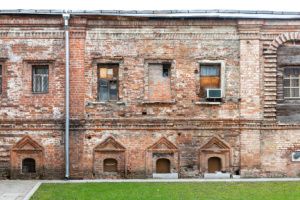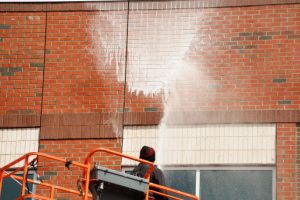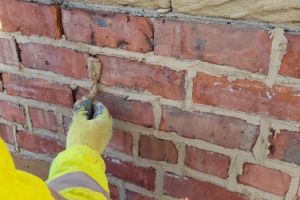Historical buildings have withstood the test of time, and are often associated with past events that have shaped communities and nations. They even serve as tangible reminders of an era where things were much different than they are now.Read and lean how to treat and restore historical bricks.
Because of this cultural importance, historical buildings should be well-cared for. That can be difficult when older materials, especially brick or stone, begin to deteriorate. Fixing up a historical building can be a tricky operation due to the delicate nature of the task, but professionals can bring their expertise to solve the problem.
It can be difficult to know what to do about a historical building that is starting to fall apart but be aware-fixing the issue yourself is very rarely the right answer. Here are some pointers for treating and restoring historical bricks with the help of an expert.
Locate The Problematic Areas

The first step in restoring a historical building is determining what is wrong with it. Look at the building and the environment around it to identify what is damaged and what could be causing such damage if left unchecked. Make notes and take photos to remember what needs doing.
As you do this, think of the building and its surroundings as a system, not just individual parts. Each of the materials in the structure works together, and plants, water and nearby machinery can affect the building’s stability.
Hiring a professional to conduct an inspection is also a good idea. If you see cracks or flaking masonry, this is a good indication that something is wrong. Similarly, signs of water damage or moisture intrusion should be approached as quickly as possible to avoid damage between the exterior and interior walls and supports.
Learn About The Building’s History
Look into your building’s past. Read through old documents and find out its historical significance, previous owners and any changes that may have been made over the years.
After that, determine the integrity of the building-in other words, how much of its history remains. Try to prevent your restoration process from adversely impacting your building’s historical integrity. This is possible if you work closely with experts to maintain the features and characteristics that make the building unique, while still implementing sturdy restorations that will last a long time.
Cleaning The Bricks

If you need to clean aged bricks, there are a few things you need to know before you begin. First, this is a sensitive task that must be done with care, so outsourcing to a professional is probably the best way for you to go. Mistakes can be destructive and costly, and convenient machines like rentable power washers can cause permanent damage if operated improperly.
Historical bricks should be pressure washed only if they are very soiled. At this point, the risk of damaging these aging materials can be more of an issue than the unpleasant appearance of a dirty building.
When cleaning, be as gentle as you can. Whichever method is used to wash the building, it should be tested in an inconspicuous spot beforehand to see what happens. Do not use strong chemicals, power washing, abrasive methods like sandblasting or metal bristle brushes or any kind of water if freezing temperatures are a possibility.
Finally, ensure that all of the water around the building (for example, any water that is caught in the gutters) is designed to travel away from the structure. Remember, maintaining what you already have – rather than adding or replacing features – is the best way to avoid future, even more expensive repairs and replacements.
Repairing The Bricks

If your building must be repaired, there are several important things to remember. You may want to consult both a professional masonry repair company and a preservation professional to ensure the best outcome.
Don’t try to cut corners by filling in gaps with stucco or cement, and don’t add modern solutions like water repellent coatings. Not only do they alter the historical look and feel of the building, but they can actually make the problems worse and make everything fall apart faster.
Brick and mortar can be repaired, without removing bricks, through a process called repointing. Professionals will help the building properly support its weight while sections of bricks are either replaced or patched. This may include the installation of better-supporting structures or methods like flashings to wick water away and prevent further damage.
Trust The Experts To Help You Restore Historical Buildings
Just because a building is old does not mean it cannot be repaired. From completely replacing brick or stone to supporting what is already there and helping it to last as long as possible, the experts can help. Waterproof Caulking & Restoration would be happy to help you explore your options for treating and restoring a historical building. Reach out to learn more or to schedule an appointment to get started.
